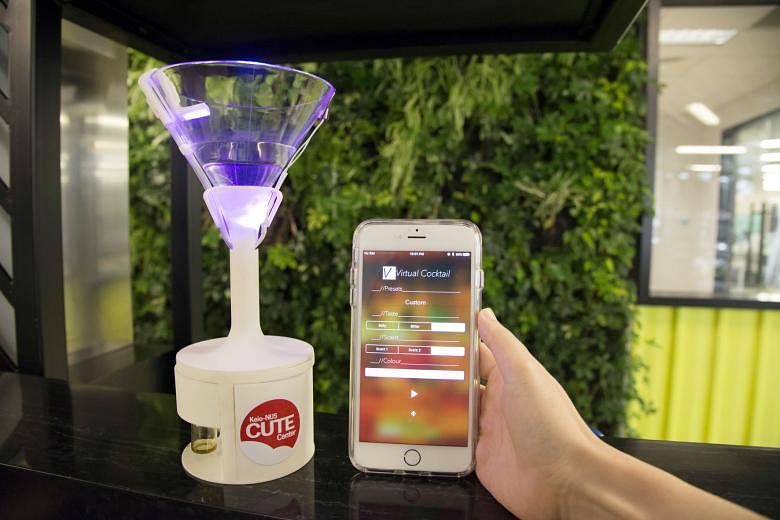Going for a drink while you are on a diet could soon be less of a guilt trip. Just bring along a special cocktail glass designed by local researchers, and you will feel as if you are drinking wine even if it is really plain water.
One of the researchers gave a demonstration of the device - called Vocktail, short for virtual cocktail - yesterday.
"We are interested in virtual reality in general - how can we introduce virtual beverage, and how to augment the existing flavours of beverages," said lead researcher Nimesha Ranasinghe, from the National University of Singapore's Keio-NUS Cute (Connective Ubiquitous Technology for Embodiment) Centre.
Vocktail is engineered to play with a drinker's senses, including those of smell, sight and taste.
The glass sits in a 3D-printed structure holding three scent cartridges and three micro air-pumps, which release "smell molecules" that alter the drinker's perception of the flavour of the beverage. A fruit scent for wine or a lemon scent for lemonade, for instance.
At the same time, a light-emitting diode or LED will flash a colour, which the user can pick.
It could be the colour of the drink the user is trying to simulate, or a colour that could enhance the perception of the flavour.
For example, some associate redwith bitterness, blue with saltiness and green with sourness.
There are two electrode strips on the rim of the glass, which when in contact with your tongue, send electric pulses to stimulate your taste buds to mimic different tastes: 180 microamps for a sour taste, 40 microamps for a salty taste and 80 microamps for a bitter taste. All this can be controlled by a mobile app, which allows users to create virtual flavour sensations by configuring each of the stimuli via Bluetooth.
Dr Ranasinghe said going forward, the team hopes to help the elderly and people with dietary restrictions to consume fewer calories but still enjoy their food.
He noted that they will find less palatable food, like that with reduced sodium, easier to swallow.
His team had previously invented a spoon and a bowl which can simulate different tastes, but those did not come with scent cartridges and air-pumps.
The team also hopes to be able to simulate the sensation of fizzy drinks, and the perceived texture. "We want to create a more realistic experience for users," said Dr Ranasinghe.
Talks are being held with firms to mass produce these products.
How Vocktail changes the taste of a drink http://str.sg/vocktail

